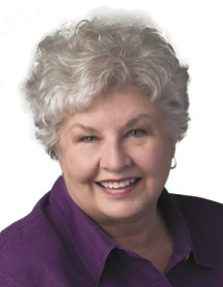
18 May 2017 ‘Autumn, you cometh not soon enough for me’
by Vivian Lawson Hogue
My least favorite season is summer, but I know we have to have it in order to feed ourselves and the mosquitoes, ticks and chiggers. I know the four seasons are supposed to be somewhat equal in lengths, but we all know that summer is six months and the rest are two each.
The summers of my early years were tolerable until the dry 1950s. Gardens received limited water from garden hoses or buckets. We almost had fried green tomatoes before we even got them in the house. Birds sat in the shade with their mouths open, trying to expel excess heat. My Manx cats sat under the drip of the hose faucet.
In late summer, those of us not smart enough to run when we saw Mother getting out her canning jars would be drafted into food prep service. We worked in what was then a cool, lattice-and honeysuckle-covered screened back porch, peeling peaches and pitching them into a #3 galvanized tub of salted water.
We also learned not to eat too many peaches.
I have spoken with others of this same era and many have similar stories. Retired banker and radio personality, Bill Johnson, told me once, “I was the weather observer for some 22 years and had access to the records from that era, but I vividly remember 1954. I recall the hottest day ever recorded in Conway at the time – 115 degrees p.m., July 12, 1954. My parents kept chickens behind our home on Davis Street, and I thought I would do those birds a favor and water down the chicken yard. It wasn’t long before several of them were on their backs with legs pointed toward the heavens. The humidity got ‘em.
“We only got about .20 of an inch of rainfall in that month. Consequently, we had to start drinking river water, and that was the impetus toward construction of Lake Beaverfork. During that year, two of the few air conditioning systems were at the First Baptist Church and the Conway Theatre. I think the Methodists got theirs shortly thereafter.”
Retired pharmacist, Dwayne Goode, has similar memories. He said, “I remember those three summers and the boll weevils eating the cotton Daddy planted. I slept outside under some mulberry trees, and it would get cool sometime after midnight. We stayed outside till time for the sun to come up. I believe it caused my dad to purchase a barber shop in Conway and stop trying to farm with heavy equipment plus two horses whose reins he kept around his waist from early morning until the sun disappeared.
“I finished high school in Greenbrier, where there was no air conditioning, nor was there any at ASTC (now the University of Central Arkansas). Math instructor, Virginia Bonds, would have her husband bring a fan to make it a little cooler in Main building. I took organic chemistry at UALR and survived Bunsen burners one afternoon every week while sweat rolled off everyone’s faces.”
Dwayne added, “I worked at the ice plant on the corner of Locust and Oak. No cafés in Conway made their ice, and the ice plant made 300 pound blocks of ice. It was my job during pre-college summers to pull that many pounds every 30 minutes from a big vat in the building. If I didn’t get it from the brine water every 30 minutes, it would crack and I was in trouble. The pay was 60 cents an hour, working 10 hours a day, 7 days a week. I made $42 a week and my dad let me put it in the bank.”
It is hard to recognize the old ice house that now has an unlikely toad painted on it. It was a magical place in our youth, even without the toad.
The best part of summers of my youth was not vacations because my family, possibly like most of Conway, couldn’t afford them. Instead, it was making Kool-Aid and cookies, lying down in cool, deep clover, listening to “Inner Sanctum” on the radio, reading, working on my stamp collection, playing outside, and, later, sleepovers and going to church camp with my best friend, Carolyn Hazel (Lewis). Life was simple and work was hard. And we were the better for it.
A native of Conway, Vivian Lawson Hogue graduated from the University of Central Arkansas with a degree in art education. A retired teacher, she worked in the Conway School District for 23 years. She is editor of the Faulkner County Historical Society’s semi-annual publication, “Faulkner Facts and Fiddlings.” She can be reached at [email protected].












